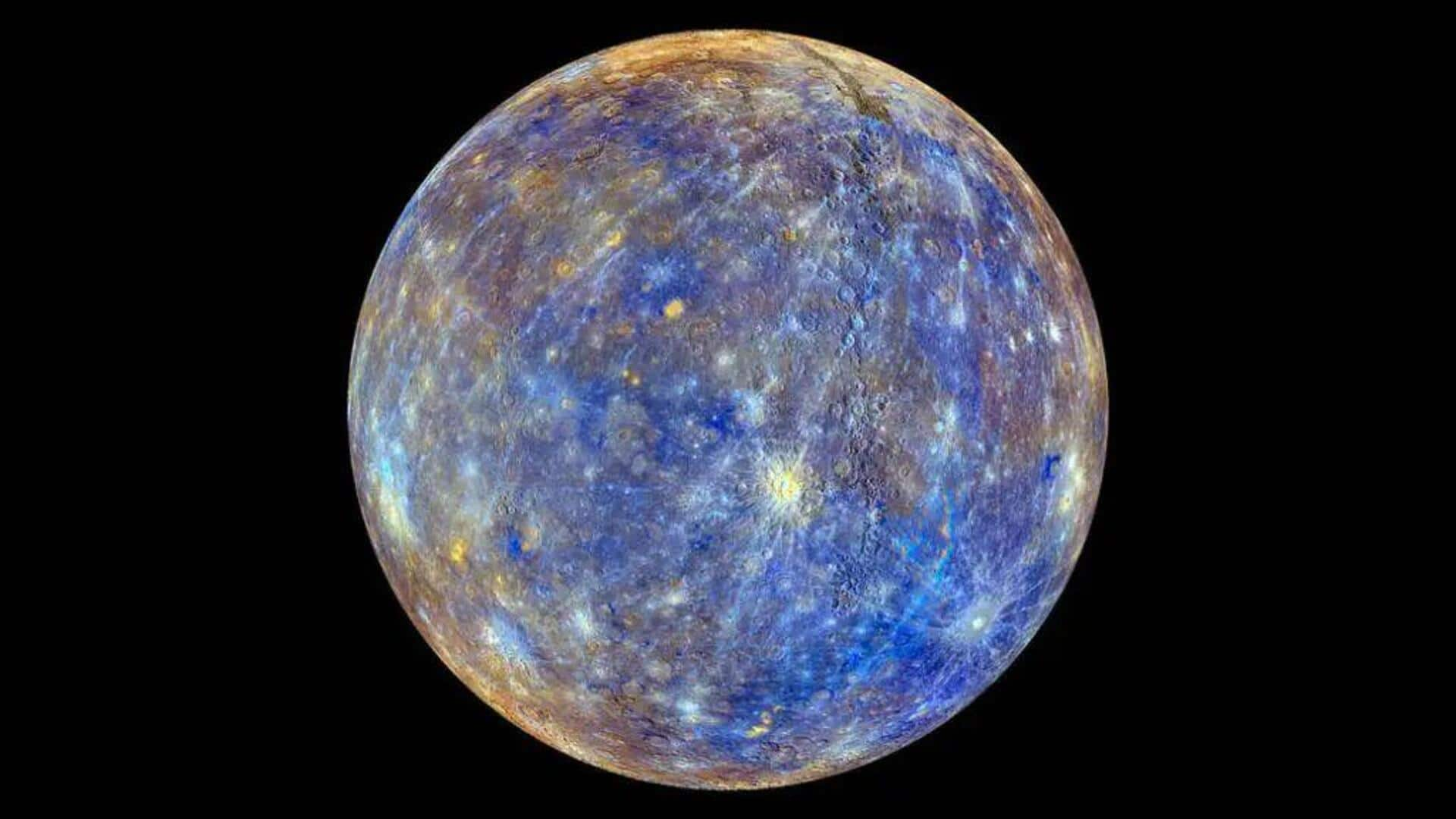
NASA spacecraft suggests Mercury may have an 18km-thick diamond layer
What's the story
An interesting discovery has been made about Mercury, the innermost planet in our solar system.
A recent study suggests that a diamond layer, up to 18km thick, could be hiding inside this celestial body.
The finding adds another dimension to the unique characteristics of Mercury, which is known for its 3:2 spin-orbit resonance and extreme temperatures exceeding 427 degree Celsius.
Discovery
NASA's MESSENGER spacecraft uncovers signs of carbon
NASA's MESSENGER spacecraft, which mapped Mercury in detail, has given us the strongest evidence of carbon.
The presence of graphite patches on the crust, an allotrope of carbon, indicates a former magma ocean rich in carbon.
As this ocean cooled down, lighter carbon rose to the surface darkening it while denser metals sank inward.
Transformation
Heavy carbon re-crystallizes into diamond
The new research suggests that heavier carbon fell along with the sinking metal and re-crystallized into diamond.
The theory was developed by a collaborative team from China and Belgium, led by Dr. Yanhao Lin, a planetary materials expert at the Center for High Pressure Science and Technology Advanced Research (HPSTAR).
"Many years ago, I noticed that Mercury's extremely high carbon content might have significant implications," Lin stated. "It made me realize that something special probably happened within its interior."
Experiment
Laboratory recreation of Mercury's interior
To simulate Mercury's interior conditions, Lin and his team recreated it in a lab.
They subjected synthetic mantle rock to extreme pressure and heat, mimicking the conditions at the core-mantle boundary.
Their experiments indicated that under these conditions, carbon transforms into diamond at this boundary, forming a shell up to 18km thick around the metallic core of Mercury.
Conductor
Diamond's role in Mercury's magnetic field
Mercury's surprisingly strong magnetic field for its size is also linked to diamond.
Lin explains that as carbon from the molten core cools down, it becomes oversaturated and forms diamond, which then floats to the core-mantle boundary.
"Diamond's high thermal conductivity helps transfer heat effectively from the core to the mantle," Lin added, "causing temperature stratification and convection change in Mercury's liquid outer core, and thus affecting the generation of its magnetic field."
Implications
Mercury's diamond layer could provide insights
If confirmed, the diamond layer on Mercury could further our understanding of other terrestrial planets with similar sizes and compositions.
Lin said, "It also could be relevant to the understanding of other terrestrial planets, especially those with similar sizes and compositions. The processes that led to the formation of a diamond layer on Mercury might also have occurred on other planets, potentially leaving similar signatures."